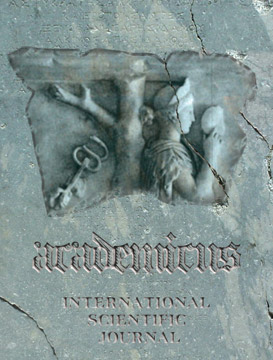Title:
Economic Strain and Adolescent Violence. Are extracurricular activities a conditioning effect?
Full Reference List:
| 1. | Agnew, Robert. 1985. A revised strain theory of delinquency. Social Forces 64: 151–167. |
| 2. | Agnew, Robert. 1992. “Foundation for a General Strain Theory of Crime and Delinquency.” Criminology 30: 47-87. |
| 3. | Agnew, Robert. 1993. “Why Do They Do It? An Examination of the Intervening Mechanisms between “Social Control” Variables and Delinquency.” Journal of Research in Crime and Delinquency 30(3): 245-266. |
| 4. | Agnew, Robert. 1999. “A General Strain Theory of Community Differences in Crime Rates.” Journal of Research in Crime and Delinquency 36: 123-155. |
| 5. | Agnew, Robert. 2001. “Building on the Foundations of General Strain Theory: Specifying the Types of Strain.” Journal of Research in Crime and Delinquency 38(4): 319-361. |
| 6. | Agnew,Robert.2003.“AnIntegratedTheoryoftheAdolescentPeakinOffending.” Youth & Society 34: 263-299. |
| 7. | Agnew, Robert, Shelley Keith Matthews, Jacob Bucher, Adria N. Welcher, and Corey Keys. 2008. “Socioeconomic Status, Economic Problems, and Delinquency.” Youth and Society 40: 159-181. |
| 8. | Agnew, Robert, and Helene Raskin White. “An Empirical Test of General Strain Theory.” Criminology 30(4): 475-500. |
| 9. | Baron, S. (2006). Street youth, strain theory, and crime. Journal of Criminal Justice , 34(2), 209–223. https://doi.org/10.1016/j.jcrimjus.2006.01.001 |
| 10. | Bearman, P. S., Jones, J., & Udry, J. R. 1997. The National Longitudinal Study of Adolescent Health: Research Design. Available at http://www.cpc.unc.edu/ addhealth |
| 11. | Bearman, Peter and James Moody. 2004. “Suicide and Friendships among American Adolescents.” American Journal of Public Health 94: 89-95. |
| 12. | Boles, David B. 2011. “Socio economic status, aforgo ttenv aria bleinlater alization development.” Brain and Cognition 76: 52-57. |
| 13. | Brookman, F., Bennett, T., Hochstetler, A., & Copes, H. (2011). The “Code of the Street” and the Generation of Street Violence in the UK. European Journal of Criminology , 8(1), 17–31. https://doi.org/10.1177/1477370810382259 |
| 14. | Cernkovich, Stephen A. and Peggy C. Giordano.1992. “School Bonding, Race, and Delinquency.” Criminology 30: 261-291. |
| 15. | Covay, Elizabeth, and William Carbonaro. “After the Bell Participation in Extracurricular Activities, Classroom Behavior, and Academic Achievement.” Sociology of Education 83(1): 20-45. |
| 16. | Crosnoe, Robert. 2002. “Academic and Health-Related Trajectories in Adolescence: The Intersection of Gender and Athletics.” Journal of Health & Social Behavior 43: 317– 335. |
| 17. | Darling, Nancy, Linda L. Caldwell, and Robert Smith. 2005. “Participation in School-Based Extracurricular Activities and Adolescent Adjustment.” Journal of Leisure Research 37: 51-76. |
| 18. | DeMaris, Alfred. 2004. Regression with Social Data: Modeling Continuous and Limited Response Variables. Hoboken, New Jersey: John Wiley & Sons, Inc. |
| 19. | Eccles, Jacquelynne S., Bonnie L. Barber, Margaret Stone, and James Hunt. 2003. “Extracurricular Activities and Adolescent Development.” Journal of Social Issues 59: 865–889. |
| 20. | Feldman, Amy F. and Jennifer L. Matjasko. 2005. “The Role of School-Based Extracurricular Activities in Adolescent Development: A Comprehensive Review and Future Directions.” Review of Educational Research 75: 159–210. |
| 21. | Fredricks, Jennifer A. and Jacquelynne S.Eccles. 2005. “Developmental Benefits of Extracurricular Involvement: Do Peer Characteristics Mediate the Link between Activities and Youth Outcomes?” Journal of Youth and Adolescence |
| 22. | Gale, Christian Edward, “Role model development in young African American males: toward a conceptual model” (2007). Masters Thesis, Smith College, Northampton, MA. https://scholarworks.smith.edu/theses/1274 |
| 23. | Hoffman, John P. 2006. “Extracurricular Activities, Athletic Participation, and Adolescent Alcohol Use: Gender Differentiated and School-Contextual Effects.” Journal of Health and Social Behavior 47(3): 275-290. |
| 24. | Kreagar, Derek A. 2007. “Unnecessary Roughness?: School Sports, Peer Networks, and Male Adolescent Violence.” American Sociological Review. 72(5): 705-724. |
| 25. | Mahoney, Joseph L. 2000. “School Extracurricular Activity Participation as a Moderator in the Development of Antisocial Patterns.” Child Development 71(2): 502-516. |
| 26. | Mahoney, JosephL., and Håkan Stattin. 2000. “Leisure Activities and Adolescent Antisocial Behavior: The Role Of Structure and Social Context.” Journal of Adolescence 23: 113– 127. |
| 27. | McNeal, RalphB. Jr. 1995. “Extracurricular Activities and High School Dropouts.” Sociology of Education 68: 62-81. |
| 28. | Office of Juvenile Justice and Prevention Programs. 2001. “The YouthArts Development Project.” U.S. Department of Justice Office of Justice Programs. May 1-16. |
| 29. | Parker, K., & Reckdenwald, A. (2008). Concentrated disadvantage, traditional male role models, and African American juvenile violence. Criminology , 46(711- 735), 17–31. https://doi-org.tcsedsystem.idm.oclc.org/10.1111/j.1745- 9125.2008.00119.x |
| 30. | Rekker,R.,Pardini,D.,Keijsers,L.,Branje,S.,Loeber,R.,&Meeus,W.(2015).Moving in and out of Poverty: The Within-Individual Association between Socioeconomic Status and Juvenile Delinquency. PloS one, 10(11), e0136461. https://www. ncbi.nlm.nih.gov/pmc/articles/PMC4648521/#:~:text=Socioeconomic%20 status%20(SES)%20is%20one,treated%20as%20a%20static%20characteristic. |
| 31. | Robo, M. (2014). Social inclusion and inclusive education. Academicus International Scientific Journal, (10), 181-191. |
| 32. | Selvaggio, M. A. (2014). From urchins to sailors: an educative and civic experiment in Naples (1913-1928)-The story of “Caracciolo”, between poverty, social solidarity and education challenges. Academicus. International Scientific Journal, 9. |
| 33. | Wright, B., Caspi, A., Moffitt, T., Miech, R., & Silva, P. (1999). Reconsidering the relationships between SES and delinquency: causation but not correlation. Criminology , 37, 175–194. https://doi. org/10.1111/j.1745-9125.1999.tb00483.x |
Back to article
Academicus
International Scientific Journal
pISSN 2079-3715
eISSN 2309-1088
Address:
Sheshi i Flamurit, Rruga Muze
Al-9401 Vlorë, Albania
Tel: +355 68 60 60 555
info@academicus.edu.al
https://academicus.edu.al


